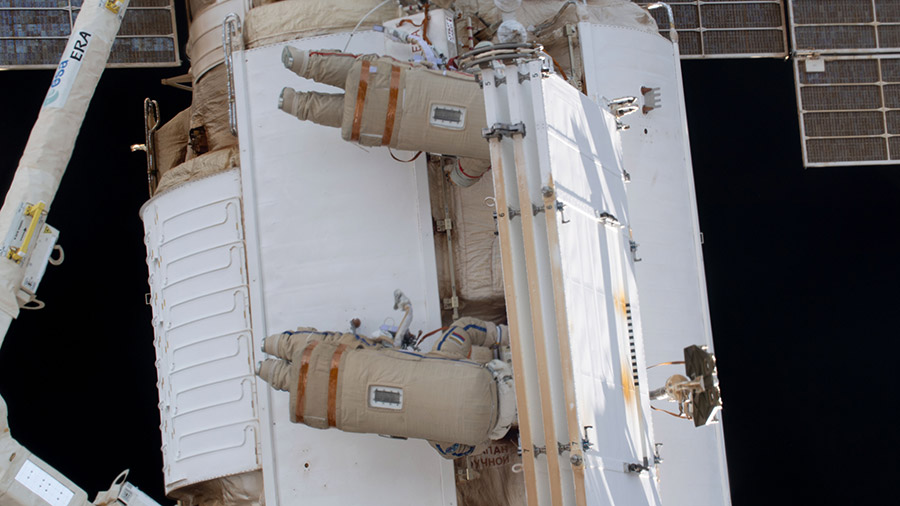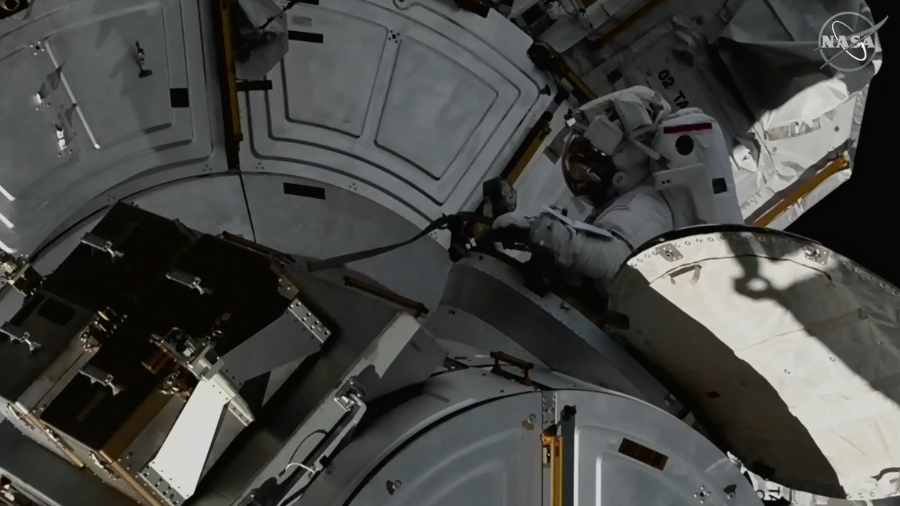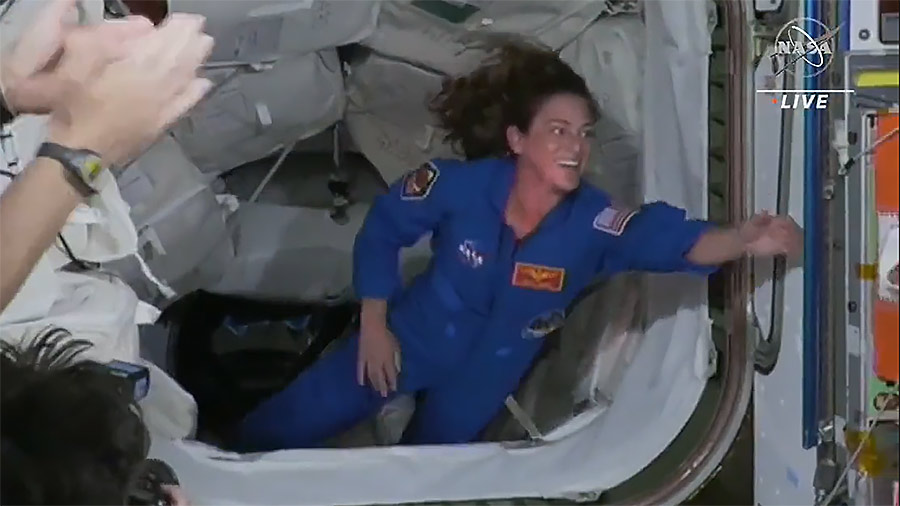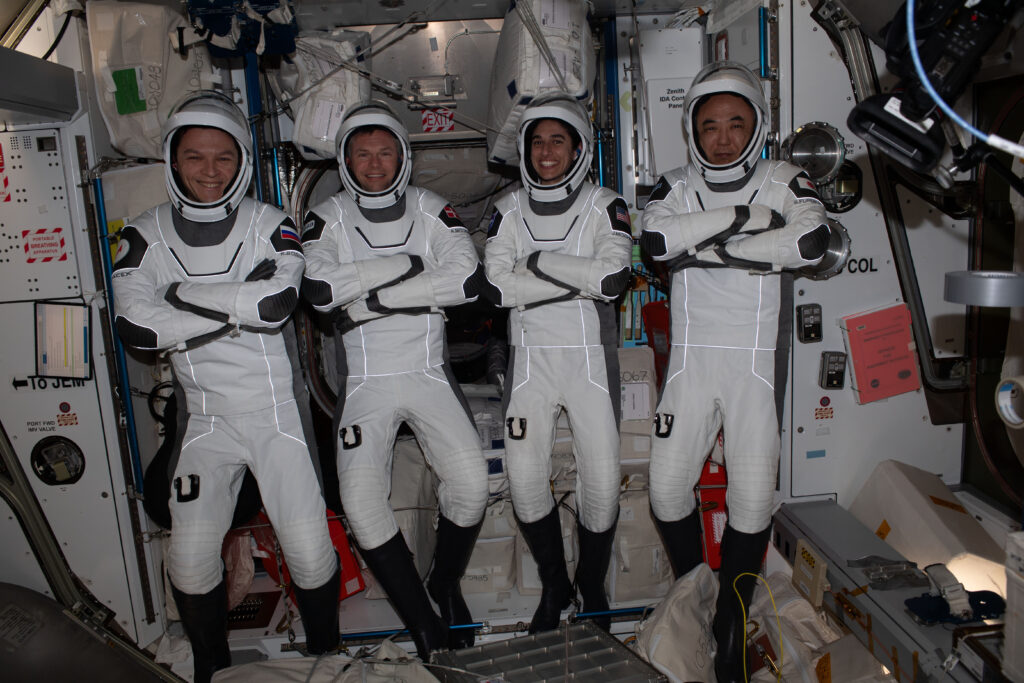
Station managers have given the go for a spacewalk on Friday to deploy and activate a radiator on the International Space Station. Meanwhile, the Expedition 69 crew is continuing its ongoing human research activities and science hardware maintenance.
Two cosmonauts will exit the Poisk airlock in their Orlan spacesuits at 11:55 a.m. EDT on Friday beginning a spacewalk to deploy and activate a radiator on the Nauka science module. Commander Sergey Prokopyev and Flight Engineer Dmitri Petelin will spend up to seven hours in the vacuum of space configuring the same radiator they installed on Nauka during a spacewalk on April 19. Roscosmos Flight Engineer Andrey Fedyaev will remain inside the orbiting lab assisting the spacewalkers in and out of their Orlans and monitoring their excursion.
The trio from Roscosmos spent Thursday morning completing their spacewalk preparations checking Orlan suit components, finalizing procedure reviews, and discussing their readiness with mission controllers. Prokopyev and Petelin then took the rest of the afternoon off, while Fedyaev collected radiation detectors and cleaned electronics and computer gear.
The four astronauts supporting the U.S. segment of the orbiting lab spent Thursday studying the effects of microgravity on humans and servicing an array of advanced science gear.
NASA Flight Engineer Stephen Bowen spent all day Thursday helping doctors understand how the human body adapts to living long-term in weightlessness. He processed his blood and saliva samples during the morning then stowed them inside the Kubik incubator for 24 hours for the Immunity Assay investigation. After lunchtime, Bowen attached sensors and breathing gear to himself that recorded his aerobic capacity while he pedaled on the Destiny laboratory module’s exercise cycle.
Astronauts Frank Rubio and Woody Hoburg of NASA and Sultan Alneyadi of UAE (United Arab Emirates) focused their efforts on maintaining a variety of research hardware throughout the day. Rubio collected sound level readings aboard the station, installed an air quality monitor, and reconfigured a science education computer. Hoburg charged Actiwatches that monitor an astronaut’s heart activity and sleep cycle, replaced handles on the Human Research Facility, and finally cleaned and inspected U.S. module hatches. Alneyadi set up Bio-Monitor hardware and software that collects medical data from a headband and vest loaded with sensors that he is wearing for the Space Health study.
Learn more about station activities by following the space station blog, @space_station and @ISS_Research on Twitter, as well as the ISS Facebook and ISS Instagram accounts.
Get weekly video highlights at: https://roundupreads.jsc.nasa.gov/videupdate/
Get the latest from NASA delivered every week. Subscribe here: www.nasa.gov/subscribe




